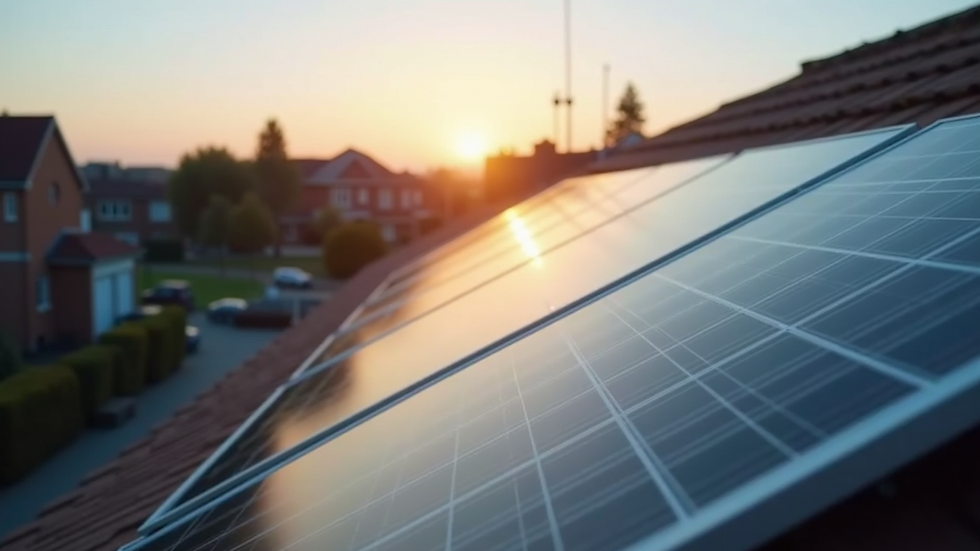Navigating the Troubles: A Professional Guide to Common Solar System Issues and Their Solutions
- Bill Adams
- Aug 23
- 3 min read
Solar energy is increasingly popular as a sustainable alternative to conventional energy sources. However, as more homeowners and businesses invest in solar systems, understanding common issues is essential for effective troubleshooting. Let’s explore the most prevalent problems that can arise with solar systems and how to resolve them.
Understanding the Basics of Solar Systems
Solar systems comprise several critical components that work together to convert sunlight into usable energy. These components include solar panels, inverters, batteries, and monitoring systems. Each part serves a specific function; any malfunction can reduce efficiency or lead to complete system failure.
By grasping how each component operates, users can more easily identify and resolve potential problems, ensuring their systems remain functional and efficient.
Problem 1: Poor Energy Output
One of the most frequent concerns among solar system users is inadequate energy production. Factors contributing to this issue can include shading from nearby trees or buildings, dirt on panels, or flaws in the system's design.
Potential Solutions:
Check for Obstructions: Look for any structures that may cast shadows on the solar panels. Even a small amount of shading can cut energy production by 50% or more.
Clean the Panels: Accumulations of dust, debris, or bird droppings can significantly hinder performance. Cleaning panels at least twice a year, ideally during overcast weather to prevent streaks, can improve energy output by up to 20%.
Evaluate System Design: If the solar system was incorrectly designed for the available solar potential in your area, seeking professional advice for a redesign could be necessary. For instance, areas with high sunlight exposure would benefit from optimal panel placement.
Problem 2: Inverter Issues
Often dubbed the "heart" of a solar system, the inverter converts the direct current (DC) from solar panels into alternating current (AC) for household use.
Signs of Inverter Problems:
Error Messages: Many modern inverters have displays that show error codes. Timely attention to these messages is crucial for system performance.
No Power Output: If your solar system appears operational but is not producing AC power, the inverter may have malfunctioned.
Solutions:
Consult the Manual: The inverter's manual can offer specific troubleshooting steps tailored to your model, which can help resolve minor issues.
Make Sure It’s On: Occasionally, inverters may be accidentally switched off. A quick check of status lights can reveal any operational issues.
Seek Professional Help: If the inverter remains unresponsive, getting in touch with a certified technician is vital for accurate diagnosis and repairs.
Problem 3: Battery Storage Failures
For solar systems with battery storage, issues can arise from insufficient charging, battery degradation, or compatibility problems.
How to Address Battery Issues:
Monitor Battery Life: Regularly inspect charge status and voltage levels. Battery management systems that provide this data can be beneficial and may improve battery life by up to 30% with proper maintenance.
Proper Installation: Ensure that batteries are installed following the manufacturer’s guidelines to minimize risks. Improper installation can lead to failures or safety concerns.
Professional Evaluation: If batteries show signs of wear or fail to perform as expected, consult a specialist for potential replacement or upgrade options. Many batteries last between 5 to 15 years depending on usage and care.

Problem 4: Monitoring System Failures
Solar setups often include monitoring systems that provide vital data on energy production and consumption. A malfunctioning monitoring system can impair users' ability to analyze their systems' efficiency.
Troubleshooting Steps:
Check Connections: Inspect all cables related to the monitoring system to ensure they are secure. Loose connections can disrupt data reporting.
Update Software: Keeping monitoring applications updated is crucial. Neglecting updates can lead to software bugs and inaccuracies in data monitoring.
Contact Support: If problems persist, reaching out to customer support for technical assistance can help resolve complex software or hardware issues effectively.
Problem 5: Unexpected Shade Patterns
Seasons change, and the angle of the sun shifts, which can lead to previously unobstructed solar panels becoming shaded. This phenomenon often results in decreased energy output, particularly during winter months.
Solutions:
Regular Assessments: Frequently evaluate the surrounding area for new shading obstructions, like growing trees or neighboring structures.
Repositioning Panels: If it is practical, consider adjusting the panel layout or installing mounts that allow for tilting toward the sun.
Use of Microinverters: Investing in microinverters allows individual panels to operate at peak efficiency, reducing the impact of any shading on overall system performance. Research indicates that microinverters can improve energy production by 10% to 20%.
Final Thoughts
Solar energy systems present numerous benefits, including reduced energy bills and a smaller carbon footprint. However, proactively maintaining and troubleshooting common issues is vital for optimal performance.
By understanding these problems and their solutions, users can ensure their solar systems operate efficiently, even under challenging conditions. Regular monitoring, maintenance, and professional guidance can significantly enhance the durability and effectiveness of solar systems, supporting our collective move toward a sustainable future.




Comments